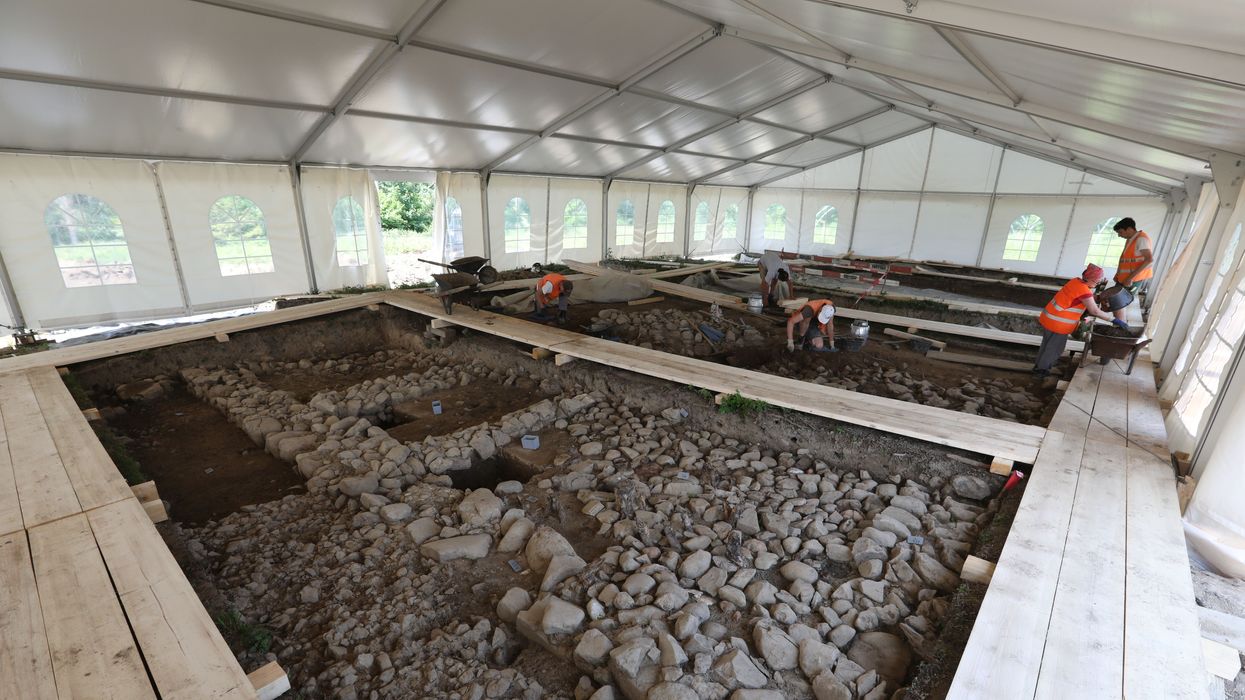Catherine Shuttleworth
Sep 08, 2023

Wall discovery in Swiss Alps called an 'archaeological sensation'
ADA Zug, David Jecker
The remains of 2,000-year-old Roman walls have been discovered by archaeologist in Switzerland in the foothills of the Alps.
During the excavation of a gravel pit in Cham in the canton, or state, of Aug in central Switzerland, the walls, which once protected a Roman building complex, were found. Other pieces have also been unearthed by archaeologists, include a plaster wall, iron nails, and gold fragments. As well as items such as bowls, millstones for grinding, glassware, and crockery and ceramic jugs known as amphorae.
In a statement form the Office for the Preservation of Monuments and Archeology, the findings were labelled an "archaeological sensation" for the region and could shed light on Roman activity in central Switzerland.
Gishan Schaeren, head of the Department of Prehistory and Protohistoric Archaeology said in the statement: "Roman buildings of similar dimensions were last excavated in Cham-Heiligkreuz almost 100 years ago. We were also amazed that the top bricks were even visible above ground."
The walls extend over an area of at least 5,300 square feet (500 square metres). Although it's unclear how Romans used the site, including whether it was a "villa with a view or a temple building," said professor of archaeology of the Roman provinces at the University of Bern Christa Ebnöther.
The team said that findings of Roman tableware known as terra sigillata - which means "sealed earth" in Latin - were found, suggesting elite people were at the site. The amphorae, which typically held liquids such as wine, olive oil and fish sauce, are evidence that Romans in the region traded with those in the Mediterranean.
Archaeologists also found several copper and bronze coins, including a silver denarius minted by Julius Caesar from the first century B.C.
The discovery of the Roman walls is not the first ancient find in the area. Previously, archaeologists had found remains of a middle Bronze Age settlement, burials from the late Bronze Age, and a number of coins form the era of the Celts.
Sign up to our free Indy100 weekly newsletter
Have your say in our news democracy. Click the upvote icon at the top of the page to help raise this article through the indy100 rankings.
Top 100
The Conversation (0)













